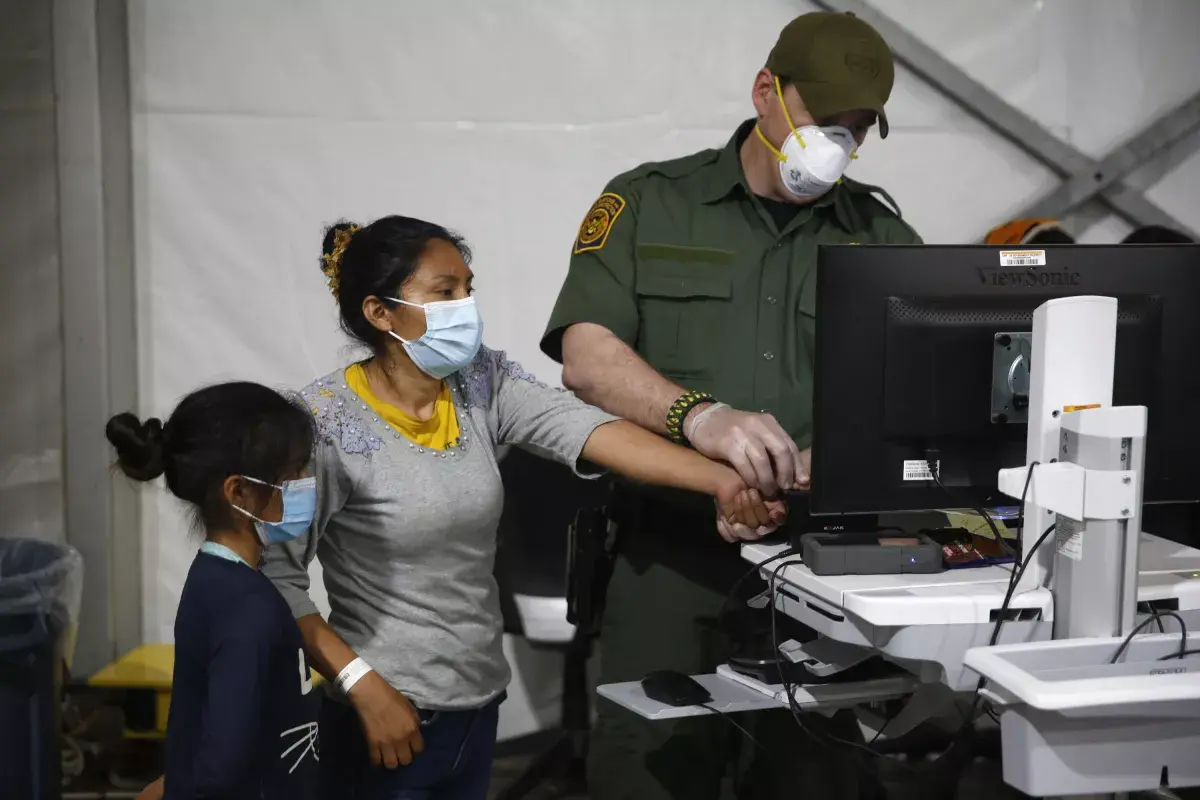Hamed Aleaziz
As an 8-year-old was dying in Border Patrol custody last month, officials at the Texas detention center where she had been held were complaining about the facility’s “overuse of hospitalization,” according to an internal report obtained by The Times.
Anadith Danay Reyes Álvarez, who suffered from sickle-cell disorder and a heart condition, had developed a 101.8 degree fever during the five days she was at the detention facility in Donna, Texas.
On May 14, two days before Department of Homeland Security investigators arrived to inspect conditions at Donna, Anadith tested positive for the flu and was transferred to a facility in Harlingen, Texas, that is designed to detain migrants with communicable diseases.
Anadith’s fever spiked to 104.9, and she was transferred May 17 to a hospital, where she died that day. A nurse at the Harlingen facility had denied Anadith’s mother’s initial requests for an ambulance or a hospital visit on the day the girl died, according to a DHS statement two weeks later. Photos of a young girl, taped in a grid onto white poster with stickers of Disney princesses, are displayed amongst flowers
Photos of Anadith Danay Reyes Alvarez are displayed during her wake last week at R.G. Ortiz Funeral Home in New York.
(Jeenah Moon / Associated Press)
Border Patrol officials’ complaints about hospitalization procedures were contained in two memos produced by the Office of the Immigration Detention Ombudsman and obtained by The Times. The relatively new oversight office is charged with reviewing conditions within Homeland Security’s vast detention system. The memos, meant for agency leadership, include details on conditions in many facilities along the southern border this spring.
The first report, dated May 15, details a spread of diarrhea among children and some overcrowding issues at a detention facility in Laredo. The second report, dated May 22, describes problems with medical care at the Donna facility.
The reports were created during a time of intense strain on the nation’s immigration detention system. Arrests at the southern border skyrocketed in the week leading up to the May 11 expiration of Title 42, the public health measure that allowed border agents to quickly turn back migrants. At one point that week, the agency was holding more than28,000 migrants in facilities at the border — way above capacity.
Both documents include a note that they reflect initial observations by the office and had not been “verified and confirmed” under the office’s typical procedures.
A third internal DHS document, dated June 8 and obtained by the Washington Post, found fault with medical care up and down the border and called for an overhaul to the system.
Homeland Security officials offered comments about the agency’s efforts to ensure detainee safety but did not provide on-the-record responses to specific questions about either of the reports The Times obtained.
According to the May 22 memo, Border Patrol officials complained about the quality of medical care at the Donna facility. The staff at Donna had a “tendency to send migrants to the hospital for things that could easily be treated on location,” the investigators wrote.
“For instance, persons with fevers are sent to the hospital instead of being given a fever-reducing medication at the facility,” they said. “The migrants typically return to Donna with ibuprofen from the hospital and no fever.”
The oversight office said that “it appears that the problems with medical care at Donna are costing CBP [U.S. Customs and Border Protection] and the main contractor … valuable staff time. CBP reported to me that they have had as many as 12 agents at the hospital at once.”
A source familiar with the report on medical care at Donna who was not authorized to speak on the record said in an email that the oversight office’s description of the Border Patrol perspective on hospitalization was “an observation that more people should be treated on the spot with the appropriate level of care as intended in the contract, rather than burdening the hospital and [Border Patrol] transport staff who are needed for more emergent cases; such as those with pre-existing conditions.”
Border Patrol officials’ complaints about the medical care at Donna were not limited to overuse of hospitalization, according to the report.
Leadership at the facility told investigators that a boy with third degree burns was treated onsite “with readily available creams when he should have been hospitalized. He later had to be sent to a burn center.”
In addition, the report noted complaints that medical staff at the facility do not “administer oxygen, even though providing oxygen is a standard EMT function.” An exterior frame of the Border Patrol station in Harlingen, Texas.
The Border Patrol station in Harlingen, Texas.
(David Pike / Valley Morning Star via Associated Press)
The report also relayed what it described as a misdiagnosis that led to “overreaction” in the facility. A nurse apparently diagnosed a person with a possible case of measles, the report said. “Fortunately, this was not an accurate diagnosis. Unfortunately, news of the diagnosis spread, and there was fear among staff and those in custody until it could be established that the information was incorrect.”
Investigators also reported that minors at Donna were “only getting checked if a problem is noted” and that “some medical staff are using Google translate on their private phones for interpreter services.”
In response, a Customs and Border Protection official said that “online translation tools are used in limited instances, and are an example of how we use every tool available to ensure communication with all those in our custody.”
CBP officials said that they are prioritizing processing families and “medically fragile” migrants and that families are spending less time in custody as a result of the review. United States Public Health Service clinicians have been deployed to border facilities to provide extra guidance and oversight, officials said.
“CBP will continue to review procedures, practices, and equipment in order to ensure that we are protecting those in our care,” a spokesperson said in a statement.
Border detention facilities are not prepared to handle the complex issues they face, Parmar said.
“These have become health systems without the resources to be health systems,” she said. “The system doesn’t have what they need to take care of complex patients … there should be a comprehensive review of cases, charts, and external oversight to determine what could strengthen the system.”

